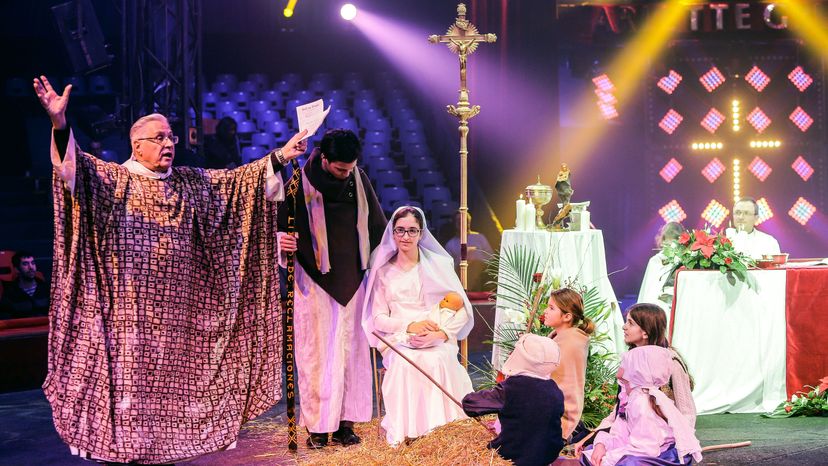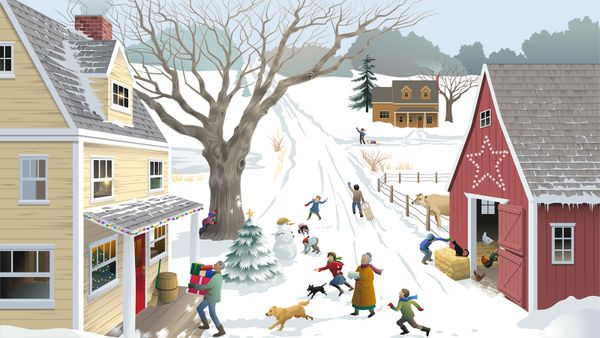Christmas Traditions in France

Christmas in France is a family holiday. The celebrations begin on December 5, which is St. Nicholas Eve. It is a day for gift-giving between friends and relatives. On that cold night, children leave their shoes by the hearth so Pere Noel, or Father Christmas, will fill them with gifts.
Christmas Eve is the most special time in the French celebration of Christmas. Church bells ring and voices sing French carols, called noels.
Advertisement
The family fasts all day, then everyone but the youngest children goes to midnight mass. The churches and cathedrals are beautifully lit, and most display a lovely antique creche. Afterward, the family returns home to a nighttime feast that is called le reveillon. The menu is different in the various regions of France. In Paris, it might be oysters and pate, while in Brittany, the traditional midnight supper is buckwheat cakes and sour cream.
A few days before Christmas, the family sets up a nativity scene, called a creche, on a little platform in a corner of the living room. Some families also decorate a Christmas tree with colorful stars, lights, and tinsel, but the creche is much more important.
The tradition in Provence, in the south of France, is to include, along with the Holy Family, the Three Kings, the shepherds, and the animals, delightful little figures from village life dressed in old-fashioned costumes. These figures might include a village mayor, a peasant, a gypsy, a drummer boy, and other colorful characters. Another tradition in Provence is for people to dress as shepherds and take part in a procession that circles the local church.
To complete the elaborate creche in their home, children bring moss, stones, and evergreen branches for the finishing touches. When the candles are lit, the creche becomes the centerpiece of the Christmas celebration. The children gather around it to sing carols every night until Epiphany, on January 6.
Christmas plays and puppet shows are popular entertainments at Christmas, especially in Paris and Lyons. The shop windows of large department stores have wonderful displays of animated figures that families like to visit.
If any children did not leave their shoes out to be filled with gifts by Pere Noel on St. Nicholas Eve, they leave them out on Christmas Eve to be filled by Pere Noel or the Baby Jesus. Before going to bed, some families leave food and a candle burning, in case Mary passes by with the Christ Child. In homes that have a Christmas tree, Pere Noel hangs little toys, candies, and fruits on the tree's branches for the sleeping children.
On Christmas Day, the family goes to church again and then enjoys another abundant feast of wonderful dishes, ending with the traditional buche de Noel, a rich buttercream-filled cake shaped and frosted to look like a Yule log.
On New Year's, grown-ups visit their friends to exchange gifts with them and enjoy yet more feasting at the New Year's reveillon. The family gathers together again for a final feast on Epiphany on January 6. They eat a special flat pastry, a galette, that has a tiny old-fashioned shoe, a very little china doll, or a bean baked in it. Whoever finds the prize in their serving gets to be King or Queen for the day. As church bells ring, the celebration of the Christmas season comes to an end.

